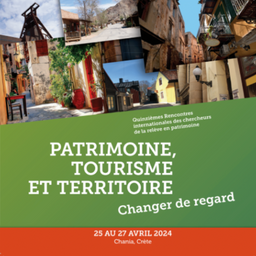The Reappropriation of post-colonial heritage in Tourism: the case of former concession in Wuhan
My Session Status
The origins of tourism development in China can be traced back to the 1980s. In 1978, the first National Tourism Work Conference was convened, setting forth guidelines and organizational structures for the advancement of tourism. The imperative for rapid tourism growth was repeatedly emphasized. As the efforts unfolded, numerous tangible heritage sites gained approval and were made available for tourism development. Nowadays, tourism has evolved into a crucial economic pillar. Domestic tourism consumption constitutes an essential part of the Chinese economy, accounting for 11% of total GDP.
In China, as in Western countries, urban centres are often characterized by a dense concentration of historical buildings where many associated traditional historical sites have accumulated. These historic properties are considered important cultural, urban, and tourism icons and attract large volumes of tourists. Since the 1980s, national and local conservation policies have been developed in China to protect these heritages, and they were usually labelled “historical monuments,” “national monument,” etc. However, in China, on the limits of centres and traditional neighbourhoods, a kind of “other” heritage has emerged in urban peripheries built between the 19th and 20th centuries. They have a number of particularities as compared to the traditional historic districts: the former concession areas. Despite maintaining their sovereignty, they were subjected to economic and administrative control by occupying powers. Due to their colonial memories and symbols of imperialism, the touristification of these regions used to be officially unacceptable at the end of the 20th century.
However, since the 21st century, these areas have gained recognition for their tourism potential and unique cultural landscape. The unique cultural landscape of concession neighbourhoods offers an “exotic” image that stands out from the general urban landscape of China. In this context, cities with concession neighbourhoods have undertaken preservation and development projects for this heritage. For example, Shanghai’s “Xintiandi” district was renovated in 2002, and in 2009, the former Italian concession was redefined as a new “I Village” in Tianjin. In 2016, the renovation project of Li Huangpi Road in Wuhan was launched. However, despite visitors’ desire for an “authentic” historical visit, the touristification of these historic areas does not always offer an experience based on their past, but more on a reorganization of the space and restructuring of narration in a way that increases its public recognition and its commercial and cultural functions.
This study focuses on the transformation of the former concession area in Wuhan, with a particular emphasis on the dynamics of the tourism industry. The research highlights the policies and transformation projects launched by the local government within the tourism sector, as well as the roles and strategies employed by private entities in the neighbourhood tourism development process. The study offers valuable insights into the collaborative efforts of both official and private stakeholders in narrating history to tourists, mitigating colonial memories, and fostering public–private partnerships to promote economic and cultural development in the neighbourhood.
A significant portion of colonial history is reinterpreted and presented in a more adaptable and engaging manner. The central inquiries revolve around the distinct roles and positions held by both official and private participants in the touristification processes. What were their respective positions? Which efforts of this process have they engaged, and what outcomes have these actions yielded? Furthermore, how have these transformations impacted the original neighbourhood ambiance and its residents, as well as the experiences of tourists?

Discussion